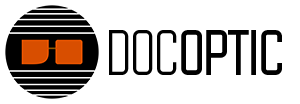This VDMX tutorial goes over 10 of our favorite workflow tips. These tips can help improve your workflow, save you some time, and provide additional insight on how to navigate through the VDMX interface to make it work for your needs.
The following are covered in this tutorial: time-saving keyboard shortcuts, easy BPM automation, quicker access to your media, saving and recalling the state of fx & parameters, quick access to user paths, removing backgrounds from your footage, using the control surface for easy access to favorite parameters, triggering media with saved settings, using marks to trigger media playback position, and using applications as media sources.
